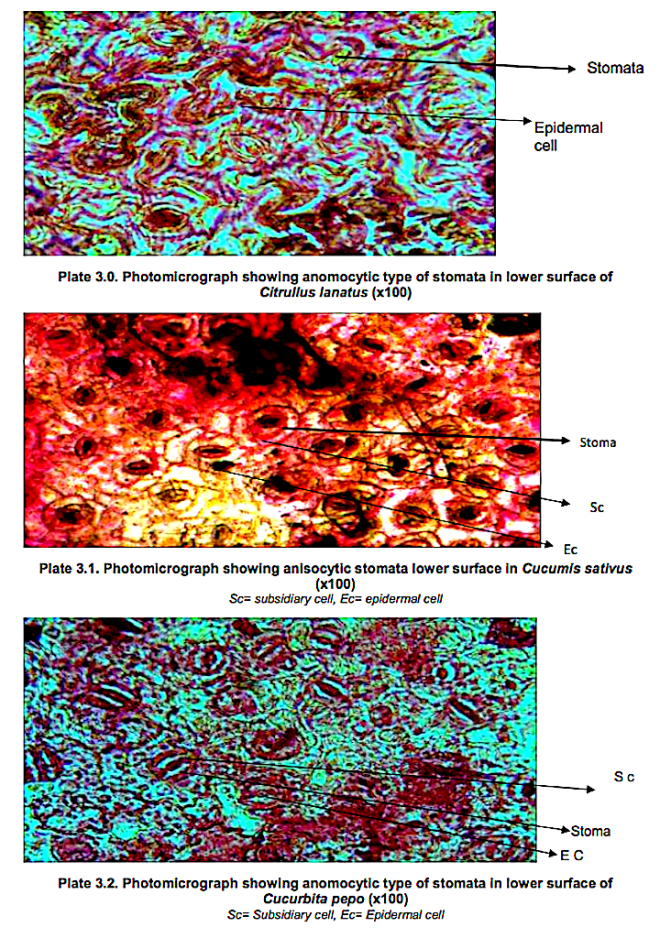Leaf Epidermal Structures and Stomata Ontogeny in Some Members of the Family Cucurbitaceae
by Jibril S. M., Jakada B. H. (2015)
Sauban Musa Jibril

Faculty of Applied Science, Jodhpur National University, Jhanwar Road Village Narnadi, Near Boranada, Jodhpur, Rajasthan, India.
in International Journal of Plant & Soil Science 9(2): 1-9 – DOI: 10.9734/IJPSS/2016/20615
http://www.journalrepository.org/media/journals/IJPSS_24/2015/Nov/Jakada922015IJPSS20615.pdf

Abstract
Aim: The aim of this research work is to study the leaf epidermal structures and stomata ontogeny of some members of the family Cucurbitaceae.
Place and Duration of Study: Department of Biological Science, Bayero University Kano (BUK), between November 2012 and February, 2013.
Methodology: The leaves of Citrullus lanatus, Cucumis sativus and Cucurbita pepo were collected ” from Imawa Village of Kura Local Government Kano state with a global positioning of N 11o 48 14.6”E 008o 48 45.4”. Epidermal peels of both abaxial (lower) and adaxial (upper) surfaces were made by placing the leaf on a clean glass slab with the surfaces to be studied facing downward. The specimens were irrigated with water holding it downward from one end, the epidermis above the desired surfaces was scrapped off carefully with a sharp razor blade, loosen cells were washed away from the epidermal peel with the aid of soft camel hairbrush and water until the desired epidermis below was reached. The epidermal peels were mounted in glass slide stained with aqueous solution of safranin for 4-8 minutes, then rinsed carefully in water to remove excess stain, a drop of 50% paraffin was added and examined using light power microscope at (x40) objective magnification. For the study of stomata types, epidermal peel was made using mature leaves and for stomata ontogeny fresh immature leaves were used. Measurement of stomata was made with the aid of an ocular micrometer and stage micrometer. The data obtained of lower surface was subjected to analysis of variance (ANOVA) at 5% level of significance to determine the least significant difference (LSD).
Results: Stomata Types: In Citrullus lanatus mature stomata are anomocytic. In Cucumis sativus the stomata are anisocytic and present on abaxial (lower) surface only and in Cucurbita pepo are anomocytic stomata.
Epidermal Cells and Trichomes: In Citrullus lanatus epidermal cells on lower and upper surface is irregular in shape, unicellular non glandular epidermal hair (trichome) were present in upper surface. In Cucumis sativus the epidermal cells were polygonal or irregular in shape, unicellular non- glandular trichomes were present in upper and lower surface.
Stomatal Ontogeny: In all the species studied mesogenous stomata development was observed.
Conclusion: The species can be distinguished by the type of stomata and variation in stomatal index, there were similarities based on stomata development between the three species.
You must be logged in to post a comment.